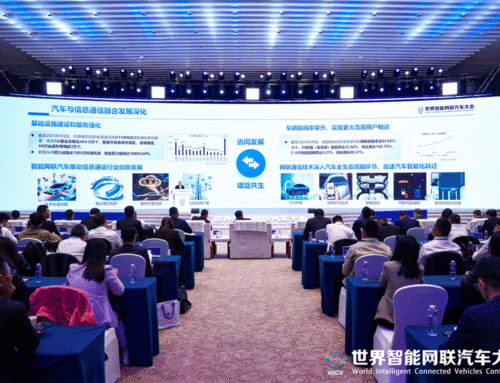On March 25, 2025, the State Administration for Market Regulation (SAMR) revised and issued the Administrative Measures for Adopting International Standards (hereinafter referred to as “the Measures”). In the Measures, it has reconfirmed that international standards are those published by the three major international standardization organizations: ISO, IEC, and ITU.
In SAMR website, it is reported as below.
To further standardize the work of adopting international standards, steadily expand the institutional openness of China’s standardization system, and accelerate the integration of domestic and international trade, the State Administration for Market Regulation (SAMR) has revised and issued the Administrative Measures for Adopting International Standards (hereinafter referred to as “the Measures”) since May 2024. The official version was released on March 25, 2025, and will take effect on June 1, 2025.
The revision focuses on five key areas:
- Clarifying the scope of international standards and adopting entities
The Measures specify that the applicable international standards are those published by the three major international standardization organizations: ISO, IEC, and ITU.“Adoption of international standards” refers to the identical or modified transformation of international standards into Chinese national standards. - Establishing a full-process international standard tracking mechanism
The Measures require that domestic organizations undertaking mirror work for international standardization technical bodies must monitor the latest progress and trends of relevant international standards. They must inform national technical standardization committees and other relevant stakeholders within 30 daysof the completion of each development stage of an international standard. - Setting timelines for adopting international standards as national standards
The Measures stipulate that projects to adopt international standards should be given priority during project approval. The time frame from project approval to submission of the approval draft should generally not exceed 12 months. For ongoing international standards under development, the Measures encourage simultaneous development and implementation of corresponding national standards in China. - Strengthening copyright policy requirements
The Measures emphasize copyright protection across multiple stages, including project evaluation, approval review, and public release of adopted standards. It is explicitly required that the publication of adopted national standards must comply with Chinese laws and regulations as well as the copyright policies of international standardization organizations. - Improving oversight and correction mechanisms
The Measures provide that the national administrative department for standardization under the State Council shall organize evaluations of the implementation of adopted national standards in key sectors. Relevant departments under the State Council are also to organize evaluations within their respective fields. If problems are identified in the adopted international standards, issues and revision suggestions should be promptly submitted to the relevant international standardization bodies.
SAMR intends to use the release of the Measures as an opportunity to further advance the alignment of Chinese national standards with international standards. The International Standards Tracking and Transformation Platform will be updated in a timely manner to reflect the latest international standards, providing strong support for building a high-level open economic system based on standards.
- SESEC previously translated the draft for public consultation of this regulation under the title:
SAMR Seeks Public Feedback on the Revision of the Administrative Measures for Adopting International Standards – sesec.eu - The English version of the newly issued Administrative Measures for Adopting International Standards is in the process of translation. SESEC will release the full translation once completed.
SAMR Press Conference
On April 21, 2025, China’s State Administration for Market Regulation (SAMR) held a press conference for the revised Administrative Measures for the Adoption of International Standards.
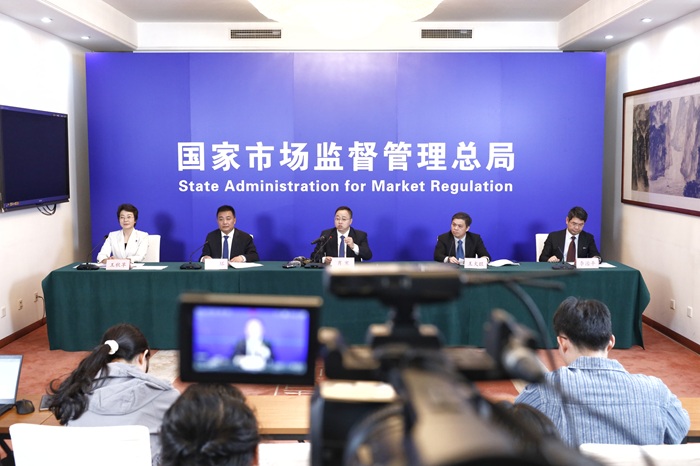
Below is the full English translation of the press conference’s transcript
Transcript of SAMR Press Conference on the Interpretation of the Administrative Measures for the Adoption of International Standards
April 21, 2025 – Afternoon Session
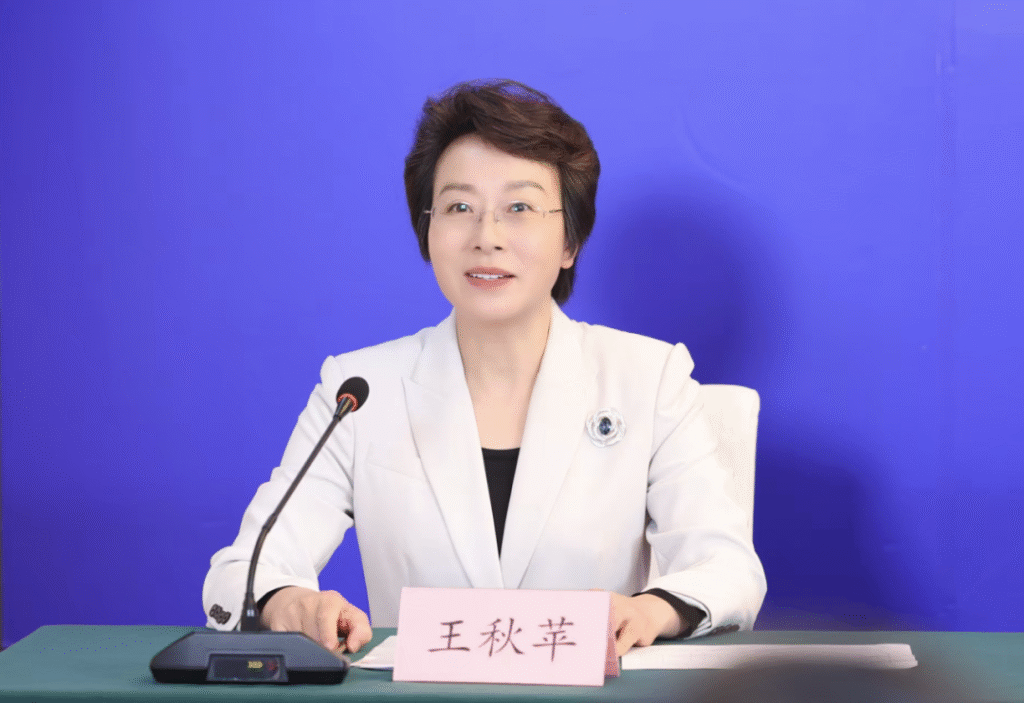
Wang Qiuping, Director-General of the Publicity Department, SAMR:
Ladies and gentlemen, fellow journalists, good afternoon! Welcome to today’s special press conference held by the State Administration for Market Regulation (SAMR).
To implement the directives of the CPC Central Committee and the State Council regarding the adoption of international standards, and in reference to relevant rules from the World Trade Organization (WTO) and international standardization organizations, while considering China’s national circumstances, SAMR has recently revised and issued the Administrative Measures for the Adoption of International Standards (hereinafter referred to as the “Measures”). The aim is to further regulate the adoption of international standards, promote institutional opening-up through standardization, and accelerate the integration of domestic and international markets. The new Measures will come into effect on June 1, 2025.
To help you better understand the contents of these Measures, we have invited Mr. Xiao Han, Director-General of the Department of Standards Innovation of SAMR; Mr. Wang Huowang, Deputy Director-General of the Department of Policies and Regulations; Mr. Wang Yuhuan, Deputy Director-General of the Department of Technical Standards; and Mr. Li Zhiping, Deputy Director of the China National Institute of Standardization (CNIS). They will introduce the overall situation and answer your questions.
First, let’s invite Director Xiao Han to give an overview of the Measures.
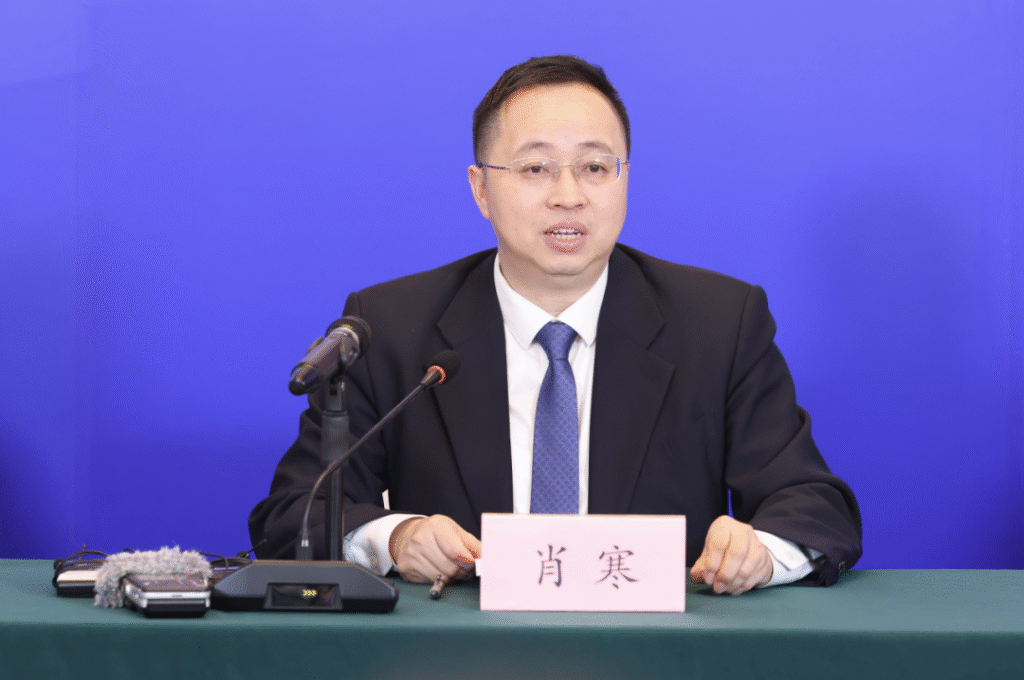
Xiao Han, Director-General of the Department of Standards Innovation, SAMR:
Good afternoon! Thank you for your continued attention to the work of SAMR and your support for international standardization efforts.
To implement the directives of the CPC Central Committee and the State Council, and with reference to relevant WTO and international standardization rules, SAMR has organized the revision of the Administrative Measures for the Adoption of International Standards. This revision focuses on three key areas:
- Clarifying the scope of international standards that may be adopted and the responsible adopting entities.
- Defining a full-process management system for the adoption of international standards.
- Strengthening compliance with copyright policies.
The new Measures will come into force on June 1, 2025.
Next, SAMR will work with relevant departments to implement the Measures from three aspects:
- Strengthen oversight of technical standardization committees and counterpart units regarding standard adoption work.
- Promote greater policy, funding, and talent support for standard adoption activities.
- Conduct extensive promotion and training, summarize and share best practices, and foster a positive environment for adopting international standards into national standards.
Let me also briefly introduce the concept of “National Standard Adopting International Standards” (采标国家标准). This refers to standards that adopt international standards and transform their contents into national standards of China. In fact, many national standards are independently developed based on China’s own needs and not derived from international standards. Thank you!
Reporter from China Quality News:
– Could you briefly explain the background and main contents of the revised Measures?

Wang Huowang, Deputy Director-General, Department of Policies and Regulations, SAMR:
The 20th National Congress of the CPC called for steadily expanding institutional opening-up in areas such as rules, regulations, management, and standards. The National Standardization Development Outline set a quantitative goal of achieving over 85% international standard conversion rate by 2025. Meanwhile, international standards organizations like ISO and IEC have tightened copyright compliance requirements for member countries.
The previous version of the Measures was no longer aligned with current needs. Hence, the new revision includes four main aspects:
- Scope and Entities:
The Measures confirm that only standards issued by ISO, IEC, and ITU are recognized as international standards for adoption. It also states that in cases where no applicable standards exist from these organizations, or their standards are unsuitable for China, other international or foreign standards may be adopted. Adoption means equivalently or modified transformation of these international standards into nationalstandards, per ISO and IEC copyright rules. - Responsibilities:
The State Council’s standardization authority is responsible for centralized management. Sectoral authorities oversee adoption in their respective fields. Industry associations may assist under national regulations. - Principles and Requirements:
Adoption should consider national conditions and aim for alignment with the international standards system. Foundational standards should be prioritized, and discrepancies with international standards should be - Full-Process Management:
Adoption must comply with national standard-setting procedures and include additional steps such as dynamic tracking, applicability analysis, and validation of international standards. The Measures also call for shorter development cycles, outcome evaluation, and updates of adopted standards.
Thank you!
Reporter from CCTV News Center:
– How does adopting international standards reflect China’s commitment to high-level opening-up and alignment with international trade and technical rules?
Xiao Han, Director-General of the Department of Standards Innovation, SAMR:
The WTO/TBT Agreement requires members to base technical regulations and standards on international standards where possible. This serves as a legal basis for adopting international standards in China.
Given increasing global scrutiny of China’s standardization efforts, heightened IP protection pressures, and stricter adoption policies from international standards bodies like ISO and IEC, China—as a member of the WTO, ISO, IEC, and ITU—must enhance alignment with global trade rules and fulfill international obligations.
The revised Measures specify in the Articles 11, 16, and 18 that all national standards adopting international standards must comply with copyright policies in the processes of evaluation, approval, and publication. For standards from other international or foreign organizations, adoption must also comply with their IP policies and Chinese laws which is stipulated in the Article 23 of the revised Measures.
Thank you!
Reporter from Bauhinia Magazine (Hong Kong):
– How is the positioning of the Administrative Measures for the Adoption of International Standards different from the Administrative Measures for National Standards and the Administrative Measures for Compulsory National Standards? How should they be applied in practice?
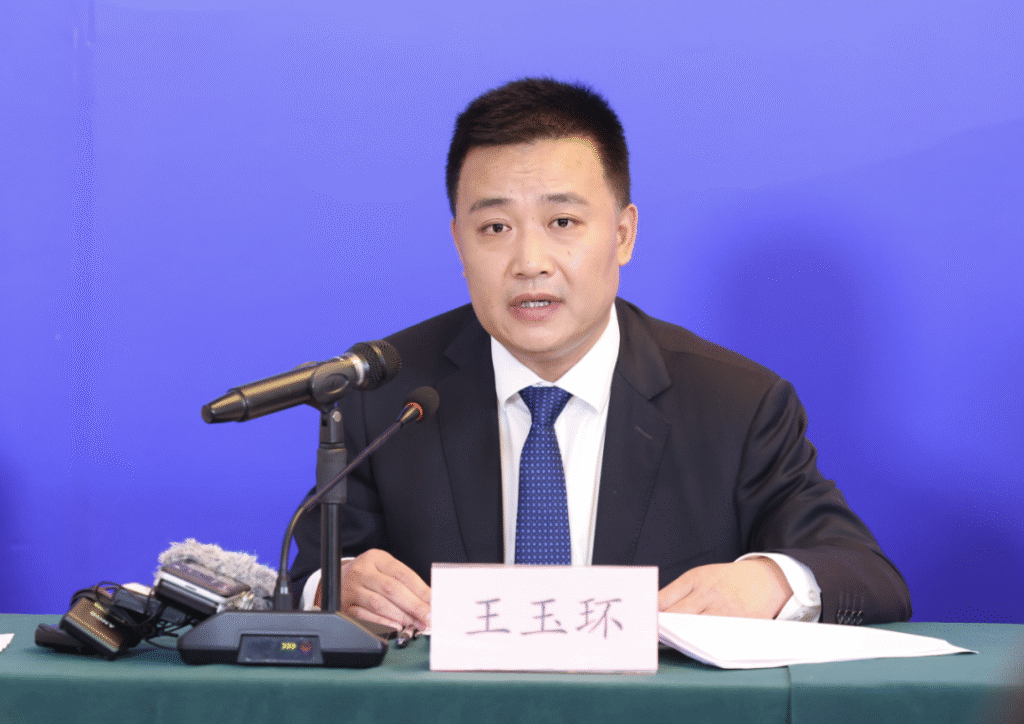
Wang Yuhuan, Deputy Director-General, Department of Technical Standards, SAMR:
The Administrative Measures for National Standards is the general law governing national standards. The Administrative Measures for Compulsory National Standards is a special law specific to mandatory standards.
The Administrative Measures for the Adoption of International Standards is a specialized law focused on integrating international standards into national ones. It aligns with the Standardization Law, the National Standardization Development Outline, and the goal of institutional opening-up.
In practice, standards adopting international content must follow both the general standard-setting procedures and specific additional steps, including:
- Preliminary Research:
Tracking international standards, analyzing applicability, and verifying technical content are now required. The Measures specify responsible parties and deadlines for these tasks. - Stricter Evaluation:
Evaluation must consider compliance with IP rules and suitability for national adoption. Drafting must follow relevant editorial guidelines (e.g., GB/T 1.2). - Faster Timelines:
If based on existing international standards, the process from project planning to submission must not exceed 12 months. Simultaneous development is encouraged for ongoing international standards. - Implementation Evaluation:
Key sectors must assess the effectiveness of adopted national standards. Problems must be reported to international bodies with improvement suggestions.
Thank you!
Reporter from China News Service:
– What are the updated definitions of international standards and adopted standards under the new Measures? How do they differ from the 2001 version?
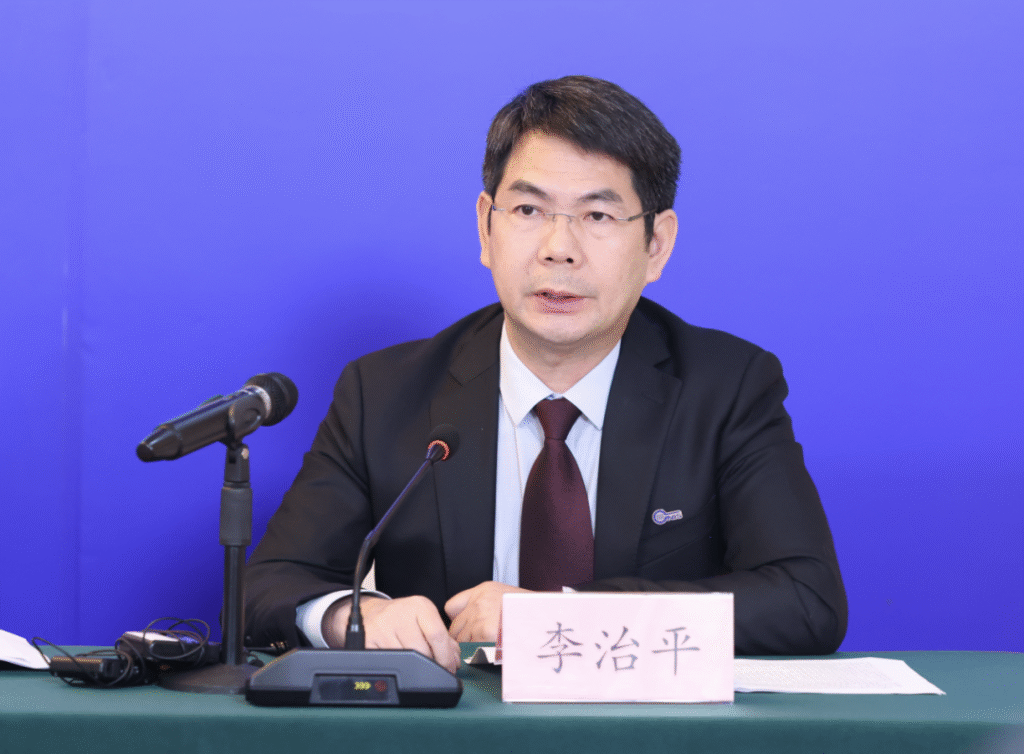
Li Zhiping, Deputy Director, China National Institute of Standardization (CNIS):
The new Measures clearly define international standards as those issued by ISO, IEC, or ITU. Adoption refers to transforming their contents, either identically or with modifications, into national standards.
In the 2001 version, adoption included national, sectoral, local, and enterprise standards, and recognized other international standards validated by ISO. However, ISO no longer confirms other international organizations’ standards, and both ISO and IEC now require that their standards only be adopted as national standards.
Thus, the scope has been tightened:
- Only ISO, IEC, and ITU standards may be adopted.
- Only nationalstandards—not sectoral, local, or enterprise ones—can result from this adoption.
- Standards from other foreign/international sources may still be adopted, but with strict compliance to IP policies and legal requirements.
Thank you!
Reporter from Workers’ Daily:
– The Measures mention encouraging various stakeholders to participate in the development and implementation of adopted national standards. Will this burden enterprises? What is the practical significance for business development?
Xiao Han, Director-General, Department of Standards Innovation, SAMR:
The Measures encourage voluntary participation from producers, operators, users, consumer groups, and public interest stakeholders. Government authorities at all levels will support this through policies, funding, and training.
There are two key benefits for enterprises:
- Facilitates International Trade:
Adopted national standards serve as a “passport” for overseas business. International contracts often specify quality standards based on international norms. Applying adopted standards in design, production, and testing ensures compliance. - Promotes Technological Advancement:
For many SMEs in China, adopting international standards is more cost-effective than independently developing new ones. It enables rapid technological progress and helps reach international levels efficiently.
Thus, rather than adding burdens, adoption supports business growth and global integration.
Thank you!
Wang Qiuping, Director-General, Publicity Department, SAMR:
Thank you to all journalists and speakers. That concludes the Q&A session. If you have further questions, please feel free to contact us after the event.
Access to the original Chinese article on the press conference from SAMR website:
https://www.samr.gov.cn/xw/xwfbt/art/2025/art_6d884626cffe4d5580d8ce4a18b8e3b5.html

